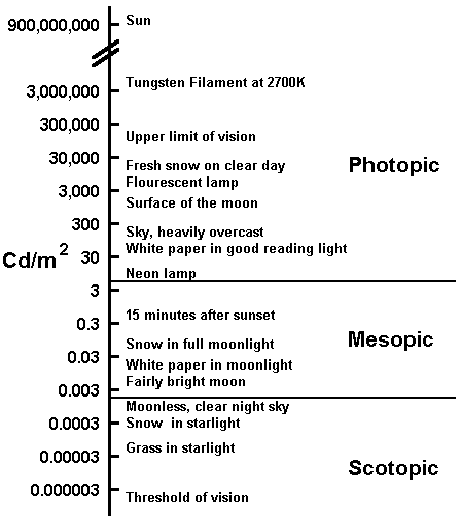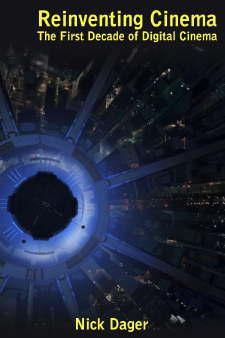From a 17 July 2010 Your Local Cinema AU article: Cinema to become more accessible – Following this article is the government announcement, including the $500,000AU investment into the cinemas.
Hoyts, Village, Greater Union Birch Carroll & Coyle and Reading have agreed to expand captioning and audio description services to a minimum of 132 locations over four years, making Australia the world leaders in cinema accessibility.
“This initiative by the cinemas provides full access anytime for consumers coupled with a commercial return for the cinema operator. This is a great example of access working in the mainstream, creating a win-win situation for everybody,” said Media Access Australia CEO Alex Varley.
Audio description, which provides a narration of important visual elements for people who are blind or vision impaired, will be delivered to patrons via personal headsets.
Captioning for Deaf or hearing impaired people will be delivered via personal Captiview viewing devices so that patrons can now go to any session of the accessible film on the accessible screen rather than only a specific open-captioned session.
Media Access Australia has been involved in the development of accessible cinema in Australia since its inception in 2001. As one of the key players in helping reach this decision, with strong ties to international service providers, MAA has contributed advice on technologies and developments to stakeholders through all stages of the program’s growth.
MAA also played a key role in the Australian government’s Department of Health and Ageing program that saw 12 independent locations begin providing captions and audio description in 2009. As part of this program MAA created this website to ensure that patrons have the right information about accessible cinema and up-to-date news.
For a more detailed examination, read the press release from Bill Shorten’s office.
For a quick explanation, see below.
On top of the number of locations, a minimum of 242 screens will be made accessible across these locations, based on the overall size of the complex:
- one screen for every complex with 6 or less screens
- two screens for every complex with 7 to 12 screens
- three screens for every complex with 13 or more screens
The timetable for achieving this goal is:
- By the end of 2010 access would be provided in 24 screens (10% of proposed total)
- By the end of 2011 access would be provided in 73 screens (30% of proposed total)
- By the end of 2012 access would be provided in 145 screens (60% of proposed total)
- By the end of 2013 access would be provided in 194 screens (80% of proposed total)
- By the end of 2014 access would be provided in 242 screens (100% of proposed total)
|
Australia’s four major cinema groups and the Australian Government have agreed to jointly fast track new technology, as part of a bold new plan to improve cinema access for people who are deaf, blind, visually or hearing impaired. |
||||||||||||||||||||||||
|
JENNY MACKLIN MP Minister for Families, Housing, Community Services, and Indigenous Affairs
BILL SHORTEN MP
Parliamentary Secretary for Disabilities and Children’s Services Parliamentary Secretary for Victorian Bushfire Reconstruction
17 July 2010
Better cinema access for hearing and vision-impaired
Australia’s four major cinema groups and the Australian Government have agreed to jointly fast track new audio description and captioning technology, as part of a bold new plan to improve cinema access for people who are deaf, blind, visually or hearing impaired.
The plan will provide cutting edge technology to allow people with impaired hearing or vision to enjoy movies in more cinemas across Australia, with 242 accessible screens to be available by 2014.
The Australian Government has committed $470,000 to the project, with the rest of the cost to be paid by the cinemas.
Minister for Families, Housing, Community Services and Indigenous Affairs, Jenny Macklin, and Parliamentary Secretary for Disabilities, Bill Shorten, today announced the new Cinema Access Implementation Plan, an agreement between representatives of Village Roadshow, Greater Union, Hoyts and Reading Cinemas and disability sector representatives.
Ms Macklin said the current situation of cinema access was unacceptable and the plan offered a genuine opportunity for change.
“Cinemas have a responsibility to cater for the entire community and at the moment the situation is clearly not up to scratch,” Ms Macklin said.
“Less than 0.3 per cent of all cinema sessions in Australia are accessible, meaning that an accessible cinema is showing as few as three sessions a week.”
Under the agreement, captions and audio description will be available in 242 screens by 2014 – at least one in every cinema complex owned by the four cinema chains.
In addition all new cinemas constructed by the group will contain accessible technology.
Mr Shorten said that people with a hearing or vision impairment had a right to enjoy a trip to the movies.
“At the moment people with impaired hearing are being forced to travel across town to catch a Wednesday matinee, because there are so few cinemas offering captions,” he said.
“I am excited that major cinemas have recognised that this form of discrimination is not acceptable, and that they will improve their business by attracting a new group of customers.”
“Current rates of vision and hearing impairment in the general population will significantly increase with the ageing of the population, and it is not acceptable to ignore them any longer.”
Cinemas today unveiled the CaptiView technology, which will be rolled out in selected cinemas in Australia this year. This technology allows hearing-impaired patrons to use a screen that folds out from an armrest and delivers a captioned version of the film.
The four major cinema chains have also agreed:
· That where there is existing accessible cinema technology in place, local managers will be sensitive to their local audiences, and draw upon their patrons to help them to innovate and implement new accessible technology.
· To gain ongoing consumer input when implementing emerging platforms such as ‘Captiview’.
· To adjust implementation of new technology options according to future innovation and consumer preferences.
· That operators will work with the Australian Human Rights Commission and the disability peaks to develop or update disability action plans to help with operation and delivery of cinema access services for people with disability.
Cinema groups will also actively engage with distributors to ensure a reliable delivery of film content that includes audio description and captioning.
In addition to the grant funding, the Government has committed $30,000 to subsidise the costs of a new Accessible Cinema Advisory Group (ACAG), with members from the cinema industry and the disability sector.
The funding will allow the ACAG to continue to advise and assist the cinema industry to improve cinema accessibility in Australia and monitor the implementation of the Cinema Access Implementation Plan.
Current cinema access worldwide, from Media Access Australia:
Post implementation:
|


